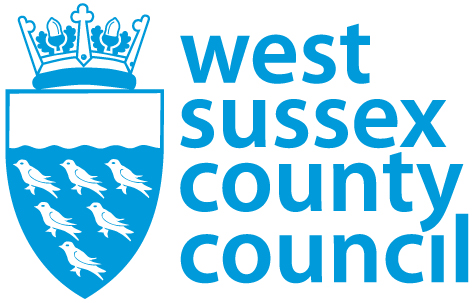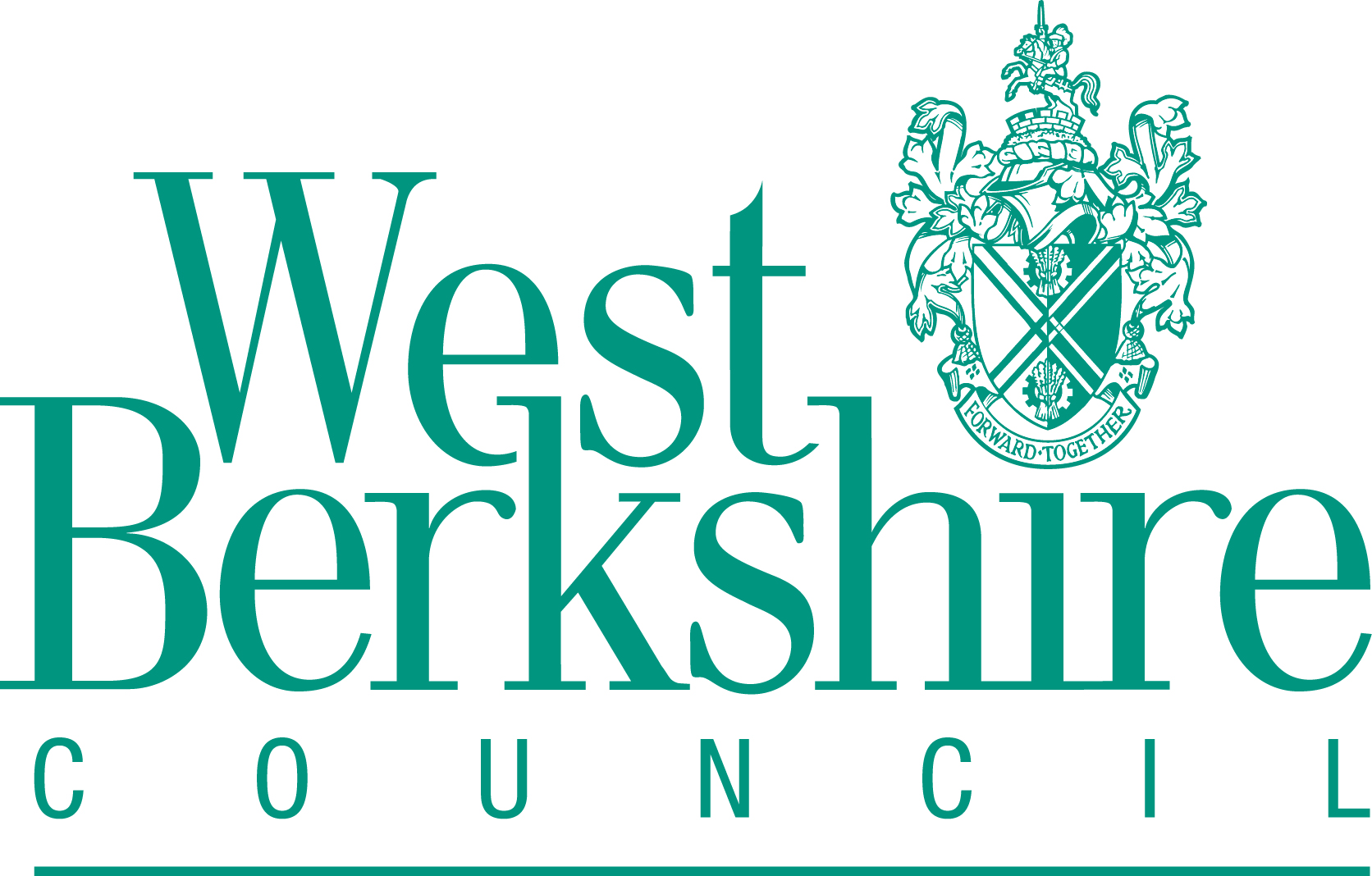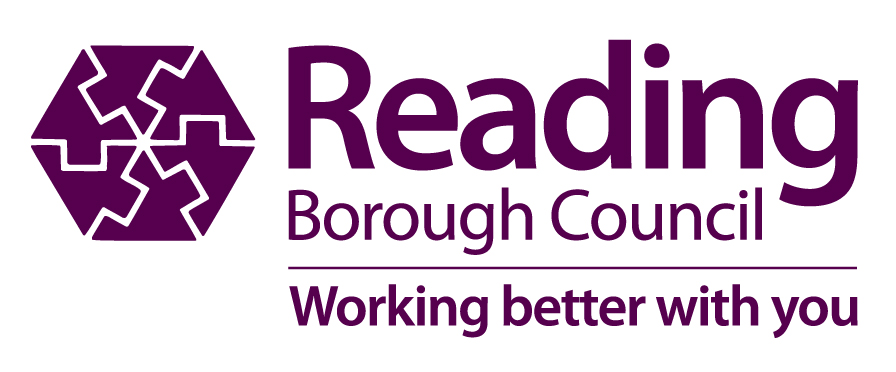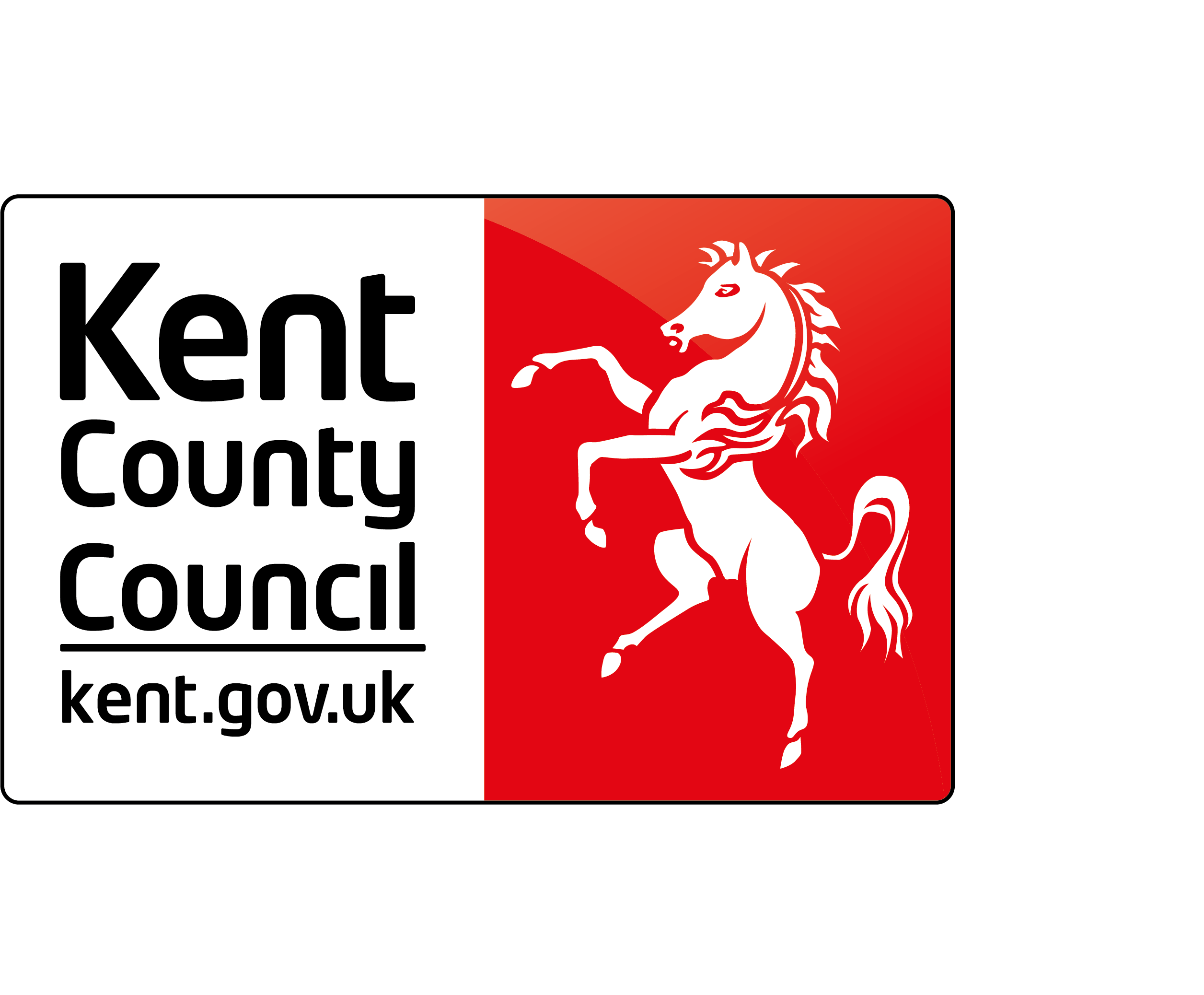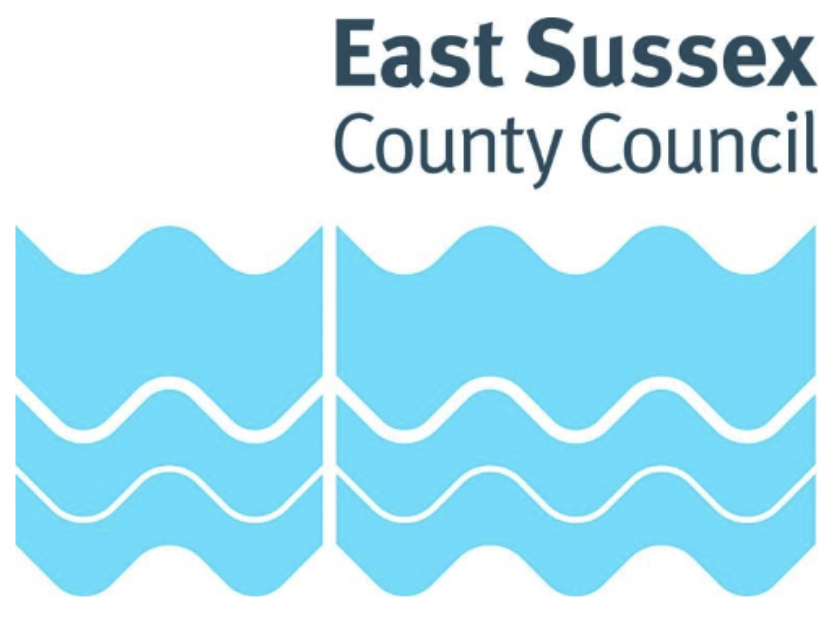Draft Integrated Sustainability
Appraisal
Draft Transport Strategy for the South East
December 2024
Prepared by
Tresor Consulting for
Steer
14-21 Rushworth Street
London SE1 0RB
+44 20 7910 5000
Prepared for
Transport for the South East
County Hall, St Anne’s Crescent, Lewes, BN7 1UE
Control Information
Author/originator: US
Reviewer/approver: EC
Client Reference: 009 TfSE Transport Strategy Refresh
Steer Reference: 24481601
Version control / issue number: 1.0 [18th July 2024]
Distribution: James Gleave, Mark Valleley, John Collins
Steer has prepared this material for Transport for the South East. This material may only be used within the context and scope for which Steer has prepared it and may not be relied upon in part or whole by any third party or be used for any other purpose. Any person choosing to use any part of this material without the express and written permission of Steer shall be deemed to confirm their agreement to indemnify Steer for all loss or damage resulting therefrom. Steer has prepared this material using professional practices and procedures using information available to it at the time and as such any new information could alter the validity of the results and conclusions made.
Non Technical Summary
Transport for the South-East (TfSE) is undertaking a refresh of its Transport Strategy first adopted in 2020. This report sets out the Draft Integrated Sustainability Appraisal (ISA) undertaken for the Draft Transport Strategy. The ISA aims to identify and mitigate environmental and social impacts at a strategic level. It is subject to public consultation alongside the Transport Strategy.
In terms of sustainability policy in England, the last five years since the Strategy was developed, has seen a growing emphasis on both environmental net gain and the need to decarbonise. Transport is the largest single contributor to greenhouse gas emissions in the UK. Development and operation of transport infrastructure and traffic have impacts on biodiversity and environmental quality (including air, water and soils).
The South East of England is Britain’s gateway to the world. Its dynamic economy, scenic landscapes, rich cultural heritage, and proximity to London and mainland Europe make it one of the most prosperous and desirable regions for living, working, and visiting in Britain. While parts of the TfSE Region are densely populated, large areas are highly designated for the biodiversity, heritage and landscape value and important for the sustainable growth of the Region.
The Strategy has five ‘missions’ which set a route map for improving strategic connectivity, strengthening resilience, enhancing integration, decarbonising the transport system, and unlocking sustainable growth. They aim to deliver beneficial outcomes by reducing congestion and air pollution; providing affordable and accessible public transport; reducing the impacts of climate change; enabling better physical and mental health through active travel; and providing users with better access to jobs, education, leisure and other opportunities.
In order to deliver these missions, a number of interventions have been identified. The majority of these were previously assessed as part of work undertaken for the Region’s Strategic Investment Plan. Interventions that require new transport infrastructure can have significant negative effects on natural capital, biodiversity, historic environment, landscape, water, soils, air quality, noise and greenhouse gases. However, they can also deliver positive effects, including on the same sustainability aspects. Positive effects include air quality, greenhouse gases, safety, health, equalities and the economy.
New interventions and measures proposed in the updated Strategy do not substantially change previous assessments undertaken. For many of the interventions, a precautionary approach is taken to the assessment. This takes into account the presence of sensitive environmental features and potential for construction and operational effects of different types of transport. Potential negative impacts predicted at this stage can be avoided or reduced through further project-level design and assessment. For larger projects with predicted significant effects in the Strategy, this will involve environmental impact assessment as part of consenting.
Health and equalities considerations, as well as information from a Habitats Regulations ‘screening’ of likely effects on protected sites for nature conservation have informed the overall assessment.
Table of Contents
Non Technical Summary 3
Table of Contents 4
- Introduction 6
Integrated Sustainability Appraisal 6
Purpose of Report 8
- TfSE Strategy Refresh 9
Background 9
Strategy Update 11
Relationship to other plans 12
- Methodology 13
Stage A Scoping 13
Stage B: Assessment 14
Stages C & D: Reporting and Consultation 14
Stage E: Monitoring 14
Limitations and Assumptions 14
- Overview of the Environment 16
Policy Context 16
Overview of the TfSE Region 16
Sustainability context 17
- Assessment 21
Strategic Connectivity 22
Resilience 22
Inclusion and Integration 23
Decarbonisation 24
Sustainable Growth 24
Results of the ISA 25
Review of cumulative effects 35
- Mitigation and Monitoring 38
Appendix A – Health and Equalities Assessments 41
Equalities Information to Support Assessment 41
Health Information to Support Assessment 53
Appendix B ISA Assessments 57
List of Figures
Figure 1.1 TfSE Area 6
Figure 1.2: Processes within Integrated Sustainability Appraisal 7
Figure 2.1 Global Policy Interventions 10
Figure 2.2 TfSE Strategy and relationship with other plans 12
List of Tables
Table 4.1 Sustainability Appraisal Framework 18
Table 5.1 Results of the ISA 26
Table 5.2 Sources of cumulative effects at a strategic level 35
Table 6.1 Mitigation and Monitoring 38
1. Introduction
Transport for the South East (TfSE) is undertaking a refresh of its thirty-year Transport Strategy published in 20201. The ambitious Vision for the Transport Strategy was to deliver a high-quality, reliable, safe and accessible transport network that offers seamless door-to-door journeys enabling our businesses to compete and trade more effectively in the global marketplace and give residents and visitors the highest quality of life. After five years, the Transport Strategy is being refreshed to ensure strategic priorities are still being met in the changing policy, demographic, socio-economic and environmental context of the area.
The TfSE area is shown in Figure 1.1 and encompasses the entirety of Kent, Medway, Hampshire, the Isle of Wight, Surrey, East Sussex, West Sussex, Brighton & Hove, and the six Berkshire authorities (West Berkshire, Bracknell Forest, Reading, Slough, Royal Borough of Windsor & Maidenhead, and Wokingham).
Figure 1.1 TfSE Area

A map of the Transport for the South East area
Integrated Sustainability Appraisal
An Integrated Sustainability Appraisal (ISA) is being undertaken as part of the strategy refresh. The ISA combines several sustainability appraisal processes, so that environmental and social impacts are identified and mitigated as part of strategy development. This Scoping Report sets out the first stage of the ISA process.
The components of the ISA process are set out in Figure 1.1 below and each process is then briefly described.
Figure 1.2: Processes within Integrated Sustainability Appraisal

A diagram showing component processes of Integrated Sustainability Appraisal
Strategic Environmental Assessment (SEA)
SEA is used to describe the application of environmental assessment to plans and programmes in accordance with the “Environmental Assessment of Plans and Programmes Regulations” (SI 2004/1633, known as the SEA Regulations). The SEA Regulations place an obligation on authorities to undertake SEA for certain plans and programmes which are likely to have significant effects on the environment.
Habitats Regulations Assessment (HRA)
HRA is undertaken under the Conservation of Habitats and Species Regulations 20172 (SI 2017/1012, known as the Habitats Regulations) for plans or projects which are not directly connected to the management of the site and would be likely to have a significant effect on a European Site designated for nature conservation, either alone or in combination with other plans. These comprise Special Areas of Conservation (SACs), Special Protection Areas (SPAs) and Ramsar sites.
Health Impact Assessment (HIA)
Health Impact Assessment is a process to identify the likely health effects of plans, policies or projects and to implement measures to avoid negative impacts and / or promote opportunities to maximise the benefits. An HIA is not a statutory requirement, however, Planning Practice Guidance3 states that planning can create environments that support and encourage healthy lifestyles and that a HIA is a useful tool when there are expected to be significant impacts.
Equalities Impact Assessment (EqIA)
EqIA is undertaken under the Equality Act 2010 to ensure that plans, policies or projects do not discriminate or disadvantage people. It applies to people with the following ‘personal protected characteristics’: age, disability, gender, gender reassignment, marriage and civil partnership, pregnancy and maternity, race, religion or belief, and sexual orientation.
Purpose of Report
This report represents the draft ISA undertaken according to the SEA Regulations and best practice4. It documents the SEA process, as well as drawing on the results of the HIA, EqIA and HRA. It is subject to public consultation alongside the Transport Strategy.
Government guidance on Strategic Environmental Assessment and Sustainability Appraisal available at: https://www.gov.uk/guidance/strategic-environmental-assessment-and-sustainability-appraisal
2. TfSE Strategy Refresh
Background
Transport for the South-East (TfSE) published its thirty-year Transport Strategy in 20205, with a vision and three goals based around Economy, Society and the Environment. An Integrated Sustainability Appraisal6, including SEA, HRA, EqIA and HIA was undertaken alongside the Strategy.
To identify the interventions that would be needed to deliver the Transport Strategy, five area studies were undertaken7:
- Outer Orbital Study
- Inner Orbital Study
- South Central Radial Study
- South East Radial Study
- South West Radial Study.
Each of the Area Studies investigated the issues, challenges and opportunities that were identified in the Transport Strategy in more detail. An ISA was undertaken for interventions in each Area Study8.
The Area Studies identified a shortlist of interventions which have formed the basis for the Strategic Investment Plan.
Strategic Investment Plan
The Strategic Investment Plan (SIP) was submitted to Government in March 20239 and provides a framework for investment in strategic transport infrastructure, services, and regulatory interventions from now to 2050.
Place-based interventions comprise 24 multi-modal packages, including rail, mass transit (buses or ferries), active travel (e.g. walking, wheeling, cycling, horse-riding) and highways. These were previously assessed under the Area Studies ISAs.
The mass transit system supports multi-modal travel and seamless transfer between modes which includes rail and bus services. The SIP is also supportive of first and last mile improvements, to widen the area that benefits from mass transit interventions. To avoid increasing congestion, improve road safety, increase access to affordable transport options, and further support decarbonisation, highways opportunities in the SIP have a particular focus on those facilitating freight and bus movements to make the best use of the roads in the region.
These packages are a step-change away from traditional “predict and provide” capacity enhancements of previous decades. They support not only strategic movement of vehicles but our places and communities. They have been refined to minimise increases in carbon emissions and the impact of these interventions on the wider environment, but all highway packages do result in small increases. A Delivery Action Plan sets out those interventions to be delivered in the next three years10.
In addition to specific interventions, the SIP introduced six global policy interventions (also see Figure 2.1 below):
- Decarbonisation
- Public transport fares
- New mobility
- Road user charging
- Virtual access
- Integration
Figure 2.1 Global Policy Interventions

TfSE, June 2023, Delivery Action Plan:
https://transportforthesoutheast.org.uk/app/uploads/2023/10/20231004_TfSE_AreaStudies_Deliver yActionPlan_Report_1.7-Blue-titles-added-to-maps-003.pdf
Some of the interventions from the SIP, in addition to the global policy interventions have been further prioritised in the updated strategy.
Strategy Update
Since TfSE’s first Transport Strategy, the context within which the strategy operates has changed. These changes broadly fall into three groups:
- Changes to national and local policies
- Changes to travel behaviour, resulting from the pandemic
- Progress since the publication of the first strategy including Area Studies and SIP described above.
The vision statement has been developed in partnership with key stakeholders and sets out the overall direction of the Transport Strategy and forms the basis of the three goals and five missions that underpin it:

The Strategy comprises five key missions that TfSE will prioritise to achieve its Vision:
- Strategic Connectivity
- Resilience
- Inclusion and integration
- Decarbonisation
- Sustainable Growth
Each mission is linked to outcomes, in addition to a number of priorities and interventions. Further information can be found in Chapter 5 and Appendix A and B of this Report.
Relationship to other plans
Figure 2.2 below shows how this document sits at a regional level in relation to national and local plans. There are a number of key transport strategies and plans at the national level which have helped to drive the refresh of the Strategy. Chapter 4 also sets out key sustainability legislation and policy taken into account in the Strategy refresh.
The TfSE constituent local authorities will use the Strategy and associated plans in local planning. This includes the 16 Local Transport Authorities and associated Local Transport Plans.
The specific transport interventions set out in the Transport Strategy are also being delivered by other organisations, including National Highways and Network Rail. The policy framework for the delivery of these major schemes is the National Networks National Policy Statement (NPS)11 and as such these major schemes have been assessed within the related Appraisal of Sustainability12.
Figure 2.2 TfSE Strategy and relationship with other plans

3. Methodology
The ISA methodology, tends to be driven by the SEA process and other sustainability assessments are incorporated into this. The stages set out in this section cover:
- Stage A: Setting the context and objectives, establishing the baseline and deciding on scope;
- Stage B: Developing and refining strategic alternatives and assessing their effects;
- Stage C: Preparing the Environmental Report
- Stage D: Consulting on the draft plan or programme alongside the Environmental Report; and
- Stage E: Monitoring the significant effects of implementing the plan or programme on the environment.
Stage A Scoping
Consultation on the scope of the ISA was undertaken via a Scoping Report issued in August 2024 to the statutory bodies (Environment Agency, Historic England and Natural England). The Report set the scope and context of the ISA through:
- An overview of the development of the Strategy and reasons for update;
- The relevant updates to legislation and policy, baseline information and future trends, whilst identifying key issues and opportunities for the appraisal of the Strategy; and
- The framework to be used for the sustainability appraisal.
The Scoping Report responds to the requirements of Schedule 2 of the SEA Regulations (Box 1 below) and a brief summary is provided in Chapter 4.
Box 1. SEA Requirements covered in the Scoping Report.
- An outline of the contents, main objectives of the plan or programme, and relationship with other relevant plans and programmes.
- The relevant aspects of the current state of the environment and the likely evolution thereof without implementation of the plan or programme.
- The environment characteristics of areas likely to be significantly effected.
- Any existing environmental problems which are relevant to the plan or programme including, in particular, those relating to any areas of a particular environmental importance, such as areas designated pursuant to Directives 2009/147/EC (Conservation of Wild Birds) and 92/43/EEC (Habitats Directive).
The environmental protection objectives, established at international, Community or national level, which are relevant to the plan or programme and the way those objectives and any environmental considerations have been taken into account during its preparation
There were no responses to the consultation, the Scoping Report has been published for information alongside the Draft Transport Strategy.
Stage B: Assessment
The SEA Regulations require that the likely significant effects on the environment arising from the plan and its alternatives are described and evaluated (regulation 12(2)).
The Strategy has been refreshed from an updated Evidence base and a number of ‘challenge statements’ set out in the ISA Scoping Report representing issues and opportunities to be addressed. Chapter 2 of this report sets out how the Strategy has evolved. For the purposes of this assessment, the main alternatives are:
- the 2020 Strategy, subsequent Area Studies and SIP; and
- the refreshed Strategy and any new interventions introduced.
The SEA Regulations cover the effects on the environment on issues such as: biodiversity, population, human health, fauna and flora, soil, water, air, climatic factors, material assets, cultural heritage, including architectural and archaeological heritage and landscape (Schedule 2, paragraph 6).
While not specifically required by the SEA Regulations, sustainability objectives are a recognised way of considering the environmental, social and economic effects of a plan or programme and comparing the effects of alternatives. The objectives are developed using the sustainability issues identified in Chapter 3. The objectives were used to assess the TfSE Strategy and identify likely sustainability effects. Further information on the methodology used for assessment is provided in Chapter 5.
Stages C & D: Reporting and Consultation
This report sets out the results of the ISA, incorporating SEA, HIA, EqIA and HRA. It constitutes the “Environmental Report” under the SEA Regulations. The ISA accompanies the draft Strategy for public consultation and will also be sent to the consultation bodies.
A Statement will be prepared following the consultation period to summarise how responses to consultation and the results of the ISA has influenced the development of the Strategy, in addition to other information required under Regulation 16.
Stage E: Monitoring
Chapter 6 of this report sets out monitoring required under SEA Regulation 17. Key metrics are incorporated into TfSE’s State of the Region Report13, which is intended to be updated every two years using available data to monitor how the region is changing in relation to economic, social and environmental objectives.
Limitations and Assumptions
The ISA covers the TfSE Region and level of assessment undertaken is proportionate to the scale of the Strategy. At this level, it is not possible to assess interventions alongside design information and a precautionary approach which uses sensitivity of the corridor combined with type of intervention is used as set out at Chapter 5.
The interventions assessed are delivered through Local Authority Transport Plans, or national bodies such as National Highways and Network Rail. Further assessment will need to be undertaken, particularly at a project level as part of delivery.
The assessment assumes that construction of any infrastructure follows existing best practice and applicable environmental legislation and guidance (for example legislation for protected species and construction best practise). Therefore, it is assumed that construction of small scale infrastructure including improving footpaths and cycleways, online bus, rail and highway (minor online works) infrastructure would generally not give rise to significant environmental effects, unless adjacent to a sensitive receptor such as a designated site. Larger infrastructure such as new railways, roads and dualling and offline mass transit may have some significant effects, and these are identified in the assessment.
4. Overview of the Environment
This chapter provides an environmental overview of the TfSE Region and a summary of the issues and opportunities associated with change over the plan period. The Scoping Report, also issued for consultation, provides further information, including a full review of the environmental characteristics, evolution of the environment, existing problems and relevant legislation, polices and plans, including any environmental protection objectives (Appendix A of the Scoping Report).
Policy Context
In terms of sustainability policy in England, the last five years since the Transport Strategy was first developed, has seen a growing emphasis on both environmental net gain and the need to decarbonise.
Goals set out within the national 25 Year Environment Plan14 are focused on enhancing natural capital and ecosystem services, including enhancing the natural environment, clean air and water, mitigation and adaptation to climate change. This is also reflected in the requirement for environmental targets and biodiversity net gain in the Environment Act 2021. The interaction between green spaces and health is also noted.
Nature Positive 203015 was produced in 2021 by the UK’s five statutory nature conservation bodies and sets out how pledges to protect 30% of land and seas for nature by 2030 can be achieved. Local Nature Recovery Strategies16 need to be prepared by authorities to identify priorities for nature recovery and propose associated actions in identified locations by March 2025. Despite these commitments, there are continuing trends of biodiversity decline.
The Department for Transport released its plan to decarbonise transport in 202117. Decarbonising all forms of transport comprised increasing cycling and walking, zero emissions buses and coaches, zero emissions cars, vans, motorcycles and scooters, decarbonising railways, maritime and aviation sectors. It also included multi-modal decarbonisation covering change in fuels, freight and logistics, the role of technology and places.
Overview of the TfSE Region
The region is densely populated along the northern border surrounding London and its south coast, including conurbations such as Southampton and Brighton. There are also a network of towns along major rail corridors to London, including Ashford, Basingstoke, Burgess Hill/Haywards Heath, and Newbury/Thatcham.
Outside these areas, population density is relatively low and the region is highly designated for its biodiversity, heritage and landscape interests. There are in the region of 300 internationally designated and 1,250 nationally designated sites for nature conservation. Canterbury Cathedral is a World Heritage Site and there are two World Biosphere Reserves (Brighton & Lewes Downs, Isle of Wight), defined by UNESCO as ‘learning places for sustainable development’, in particular interactions between social and ecological systems. There are approximately 2,200 nationally important Scheduled Monuments , in addition to over 50,000 Listed Buildings, designated for their heritage value. Two National Parks (New Forest and the South Downs) cover approximately 20% of the total TfSE area, in addition there are eight National Landscapes in the region.
There are numerous other environmental designations, in addition to other valuable assets, such as clean air, water resources and high quality agricultural soils. Environmental protection and enhancement is an important part of sustainable growth.
Sustainability context
From a review of relevant policy and baseline information in the TfSE Region, including trends over time, sustainability issues and opportunities were identified for the Strategy. Sustainability objectives were then formulated to guide the assessment.
Table 4.1 below sets out the sustainability issues, opportunities and objectives used for the assessment of the Strategy.
Table 4.1 Sustainability Appraisal Framework



5. Assessment
The assessment identifies likely effects arising from missions, priorities and associated interventions to be delivered under the Strategy. This approach ensures that all significant effects are captured, whereas reliance on missions and priorities alone may under-represent impacts in delivery.
This approach also means that the assessment is relatively high level as it uses previous ISA work for interventions in the SIP. The methodology draws on transport typologies and sensitivity of corridor described below, and project design information is limited. The assessment also identifies where new interventions are proposed to meet priorities.
The assessment of interventions within the SIP is based on:
- A sensitivity assessment – Using the approximate locations provided, each of the interventions was mapped using GIS against the indicators such as environmentally protected sites as well as socio-economic information.
- A typology assessment – based on 15 different types of transport such as new highways, on-line highway improvements, active travel, enhanced bus services etc.
Adjustments were made to align with the ISA Objectives and information from other assessment processes. Considerations for equalities and health assessments are set out in Appendix A. The results of the HRA are reported in a separate document and have been incorporated into this assessment. The HRA screening process has reached a similar conclusion to the previous HRA undertaken for the Transport Strategy. Further detailed assessment is necessary to satisfy the requirements of the Habitats Regulations. Further design information on the interventions and consultation with Natural England would be required.
This means that the assessment of individual interventions may not reflect further detail that may be available at other tiers in the hierarchy (see Figure 2.1), such as Local Transport Plans or project level assessments. However, it does mean that the assessment is based on a worst-case scenario as it hasn’t yet applied design evolution anticipated to reduce impacts.
The full ISA assessment is presented in Appendix B, with the results of this summarised in Table 5.1. New interventions are identified as alternatives to those previously presented in the SIP. They are considered alternatives under the SEA Regulations as they introduce new aspects as part of the Strategy refresh. Appendix B sets out whether each priority will be implemented in the short-term (ST) or long-term (LT). For example, interventions such as rail service timetabling and service provision are generally short to medium term and reversible. Effects associated with implementation of infrastructure are considered long-term and permanent.
A summary of the significant positive and significant negative effects for each of the Missions is presented below. This is followed by a summary of effects for each of the sustainability objectives.
Strategic Connectivity
Mission Statement: We will boost connectivity in the South East by enhancing strategic regional corridors and ensure all communities can access high-quality transport links and key services.
Significant negative effects are likely for the short-term priority to deliver or initiate well-developed schemes that enhance road and rail connectivity, and longer-term priorities for upgrading the region’s key coastal corridors and improving journey times between London and key coastal communities. These arise for environmental objectives (natural capital, biodiversity, historic environment, landscape, water, soils, air quality, noise, greenhouse gases) for some of the major road and some of the major rail schemes in the SIP. This includes the A27 Arundel Bypass, the A27 Lewes to Polegate, and some of the A27 junction improvements, in addition to new rail links to Medway and Heathrow. It should be noted that a precautionary approach has been taken and some effects may be addressed through detailed design. Effects are less like lot be significant for some of the on-line infrastructure modification schemes or those in a less sensitive location.
Significant positive effects are also predicted for air quality, safety and the economy for the short-term priority to deliver or initiate well-developed schemes that enhance road and rail connectivity, particularly where these reduce congestion and remove level crossings. Safety improvements to the A21 are also significant for the long term priority to improve journey times between London/M25 and coastal communities. Disadvantaged groups (equalities) and the economy will benefit from fare incentives to use public transport for long distance transport and isolated groups from improving access to islands and peninsulas (health, equalities). Positive effects on these objectives are also anticipated where highways schemes reduce congestion and intervention move freight from highways to rail, improving air quality, and have safety and economic benefits.
The short-term priority to reinstate international rail services and new intervention on the existing Ebbsfleet and/or Ashford line would not require new infrastructure so no effects on the majority of environmental objectives are predicted, although there may be increased rail noise and reduced noise from highway traffic. This would also have positive effects on air quality and greenhouse gas emissions. Significant positive effects were anticipated on the economy through increased connectivity for business and tourism.
Resilience
Mission: We will safeguard the South East’s connectivity and work to maintain and enhance the reliability and resilience of our transport systems for future generations.
While they improve resilience, including during climate change related events, priorities such as developing alternative corridors, tackling pinch points, delivering the Kent Bifurcation Strategy and other resilience measures can lead to significant negative effects. This is where significant new highway or rail works are proposed (e.g. Lower Thames Crossing, A29 Realignment, A22 Uckfield Bypass Dualling and Corridor Improvements, Kent Lorry Parks, reopening of the Spa Valley Line), such as leading to potential habitat loss/ severance, impacts on species, loss or damage to heritage assets, including their setting, visual intrusion into high quality landscapes, loss of soils and natural resources, and pollution to water or increase in flood risk. For highways schemes in particular, while easing congestion improves air quality, schemes can also induce traffic with significant negative effects on air quality, noise and greenhouse gas emissions.
Significant positive effects are also predicted for some of these priorities, particularly in relation to objectives for the economy, safety, health and equalities (South West and Brighton mainline, Lower Thames crossing). Significant positive effects were also predicted for climate resilience (ISA8) for short-term priorities related to highways maintenance and utility works, infrastructure renewal, planning for future risks, in addition to long-term priority related to resilience of Region’s power networks. These priorities also had positive effects on objectives for community safety and the economy, no effects on other objectives were predicted.
Environmental effects from the new intervention to renew the bridge to Hayling Island are unknown as will depend on the nature of the renewal, for example structural repairs to the existing bridge or an entirely new bridge. The bridge is in a sensitive location crossing the Chichester and Langstone Harbours Ramsar, SAC and SPA and is also adjacent to the Chichester Harbour National Landscape. Other sustainability objectives are likely to remain unchanged as a result of a bridge renewal. Lane rental schemes are likely to have positive effects in relation to minimising road works, reducing congestion and improving air quality, safety and economy.
Inclusion and Integration
Mission: We will create an inclusive and integrated transport network in the South East that offers affordable, safe, seamless, door-to-door connectivity for all users.
While the mission aims to improve connectivity for all users, significant negative effects on natural capital, biodiversity and the historic environment are predicted for some of the ferry services and highway interventions. This is largely due to sensitivity of location (e.g. Solent and Thames Estuary) and potential for disturbance to wildlife, decrease water quality, and small scale works in the marine environment. For larger-scale infrastructure (A21 dualling or bypasses in East Sussex), while improving safety, there are likely be effects on biodiversity and natural capital from habitat loss and severance, which can be challenging to provide environmental net gain, and loss or impact on setting of designated and non-designated assets.
Significant positive effects are predicted for equalities, safety, health, air quality and the economy. Geographically isolated groups in areas such as North and East Kent, islands, coastlines and peninsulas will benefit from better connectivity. Similarly providing affordable transport and integrated ticketing enables more people to use public transport. Mass transit interventions such as those for the Sussex Coast, Eastbourne/ Wealden, Hastings/ Bexhill and South East Hampshire are likely to reduce traffic emissions, improve access to employment and facilities, and provide significant mental health benefits.
The new priority for better design of infrastructure and services, such as providing accessible step-free stations and hubs, for socially excluded groups had significant positive effects on equalities, and also positive effects on health for these groups and the economy as may better enable the workforce. There was no effect on other sustainability objectives.
Decarbonisation
Mission: We will lead the South East to a net zero future by 2050 by accelerating the shift to zero-emission travel, incentivising sustainable travel choices, and embracing new technologies to reduce emissions and combat climate change.
Significant negative effects were confined to major rail infrastructure in potentially sensitive corridors for natural capital, biodiversity, and/ or historic environment including HS1 link to Medway, New Strood Rail Interchange and Waterside Branch Line. At this stage the effects are precautionary and may be reduced by project level design.
There were numerous significant positive effects associated with delivery of rail schemes, mass rapid transport and active travel schemes. These were a result of modal shift and benefits for air quality, equalities, health, safety and the economy.
Priorities which promoted low emissions technology had significant positive effects on air quality and greenhouse gas emissions, including rolling out EV charging infrastructure, low emissions vehicles, and use of alternative fuels. Priorities which support road user charging were also predicted to have significant positive effects.
New interventions involving decarbonisation of the Thames Valley Branch Line and electrification of the line between Newbury and Taunton may involve some small scale habitat loss, with potential minor impacts on heritage and landscape depending on level of intrusion from new infrastructure.
Sustainable Growth
Mission: We will champion transport interventions that unlock investment opportunities, enable sustainable growth, and create healthy, vibrant, and well-connected communities.
Like the decarbonisation mission, significant negative effects were confined to major rail infrastructure in potentially sensitive corridors for natural capital, biodiversity, and/ or historic environment including HS1 link to Medway, New Strood Rail Interchange and Waterside Branch Line. At this stage the effects are precautionary and may be reduced by project level design.
There were numerous significant positive effects associated with delivery of rail schemes, mass rapid transport and active travel schemes. These were a result of modal shift and benefits for air quality, equalities, health, safety and the economy.
Priorities to deliver integrate land-use and transport planning, focusing development in areas with existing or planned infrastructure is likely to have significant positive effects on health and well-being from active travel, including benefits of walking or cycling to onward travel by public transport. Expanding public transport and concessionary fares and subsidy schemes will encourage more people to use public transport with significant positive effects on equalities and the economy.
There were no new interventions under this mission.
Results of the ISA
Table 5.1 below sets out the results of the ISA for each of the Sustainability objectives.
Table 5.1 Results of the ISA









The SEA Regulations require that cumulative effects are considered when identifying likely significant effects. Cumulative effects arising from multiple sources within the Strategy are covered in Table 5.1 above. However, cumulative effects can also arise where several policies, plans or projects have a combined effect on an objective.
A review of plans and policies identified sources of potential cumulative effects and these are set out in Table 5.2 below.
It should be noted that at the strategic level, this list is not exhaustive and cumulative effects arising from individual projects and plans should be revisited as part of project level assessment. For example, noise, dust and visual have a combined effect which can only be determined at the project level.
Table 5.2 Sources of cumulative effects at a strategic level


The review of plans and policies has identified a number of areas for cumulative effects:
- Natural Capital and Ecosystem Services – There is potential deterioration in quality, and severance / loss of connectivity of ecosystems and green infrastructure, with consequent reductions in ecosystem service provision. This may be particularly prevalent where there is development from a number of sources (e.g. from local plans) close to population centres, or that stimulated by transport corridors.
- Biodiversity – There is potential for cumulative loss, damage or fragmentation of statutory and non-statutory wildlife sites and habitats. Although it is assumed that protected species would be mitigated at a project level, there are wider impacts on biodiversity. Net gain over multiple development plans may be difficult to achieve.
- Historic Environment – There is potential for cumulative direct and indirect impacts on internationally, nationally and locally designated heritage assets, including their settings. This is in addition to cumulative effects on undesignated and unknown assets, the latter being potentially important.
- Landscape and Townscape – There is potential for cumulative direct and indirect impacts on designated landscapes and townscapes, including their settings. There is also potential for cumulative erosion of the character and quality of the South East’s landscapes and townscapes.
- Soils and Resources – There is potential for cumulative deterioration in quality of, and loss of soils, including the best and most versatile agricultural land. There would be a cumulative use of resources and production and disposal of waste in construction.
- Water Environment – There is potential for cumulative increase in surface water runoff and flood risk; and impacts on surface water and groundwater, particularly from physical alteration as a result of development. Transport-related cumulative effects on potable water are likely to be limited.
- Air Quality – There may be cumulative benefits from transport initiatives in the SE in improving air quality, but increased uptake of vehicular traffic (especially in the short term) may worsen air quality in some areas.
- Climate Change and Greenhouse Gases – There may be cumulative benefits from transport initiatives in the South East in reducing greenhouse gases, but increased development is also likely to increase transport related greenhouse gas emissions, particularly where this leads to increases in vehicular traffic. Climate change adaptation measures are likely to be specific to each development, but there may be cumulative benefits if implemented region-wide.
- Noise and Vibration – There are likely to be cumulative effects arising from noise of increased development, particularly transport related development such as road and rail, with cumulative effects on health and wellbeing, tranquillity and wildlife.
- Health – There may be cumulative effects, both positive and negative (depending on schemes implemented), from multiple transport schemes on health outcomes related to social isolation, physical inactivity and obesity. There may also be cumulative effects on health relating to air quality and noise.
- Equalities – There may be cumulative benefits from the integration of multiple transport interventions enabling more reliable and comfortable public transport, which is accessible by walking and/or cycling.
- Community Safety – There may be cumulative benefits (depending on scheme design) on fear of crime and transport related accidents, due to opportunities to improve safety standards on all forms of transport.
- Economy – there are likely to be cumulative economic benefits in relation to development in the South East due to links between transport and productivity in the Region.
6. Mitigation and Monitoring
The SEA Regulations require that mitigation measures are considered to prevent, reduce or offset any significant adverse effects on the environment. Mitigation measures include both proactive avoidance of adverse effects and actions taken after potential effects are identified.
The SEA Regulations also require that monitoring is undertaken so that the significant effects of implementation can be identified and remedial action taken. The monitoring also helps measure the performance of the environmental outcomes of the Strategy and includes metrics from the TfSE State of the Region Reporting18. Monitoring appears in italics in Table 6.1 below.
Table 6.1 Mitigation and Monitoring



Appendix A – Health and Equalities Assessments Equalities Information to Support Assessment
Introduction
An Equality Impact Assessment (EqIA) considers the impact of a project or policy on persons or groups of persons who share characteristics which are protected under section 4 of the Equality Act 2010 (“protected characteristics”) and might also include others considered to be vulnerable within society such as low-income groups. It is an information gathering tool which enables decision makers within public bodies to implement their equality duty under the Equality Act 2010: to advance equality of opportunity between people who share and people who do not share a relevant protected characteristic.
This assessment looks at the following ‘equalities groups’ which cover both protected characteristics under the Act and other groups (*):
- Gender
- Religion
- Age
- Disability
- Race
- Pregnancy and maternity
- Deprivation*
- Social isolation*
Protected characteristics for gender reassignment and sexual orientation have not been included in the assessment due to a lack of available data relating to effects on these groups. Marriage and civil partnership is not included because the parts of the act covering services and public functions, premises and education do not apply to that protected characteristic19. For the purposes of this assessment deprivation covers deprived groups across all equalities categories listed, for example people with disabilities are more likely to also suffer from deprivation as they may be less economically active.
The sections below provide an overview of these groups in the South East from the Strategy Evidence base and then looks at the implications the Strategy outcomes and delivery on them.
Snapshot of the South East
According to the 2021 Census population for the South East was 9,278,100, growth of 7.25% over a 10-year period from 201120. The percentage of the population aged 65+ is slightly higher in the South than for England as a whole (19.5% compared with 18.4%) and slightly lower for the 20-35 age bracket (18% compared with 19.6%). 51.1% of the population is female and 48.9% male.
Ethnic and religious background data are set out in Table A.1 & Table A.2 below. Table A.1 Ethnic Diversity in the South East

In terms of disability under the Equality Act (mental or physical impairment that has a substantial and long-term effects on ability to do normal day-to-day activities), 16% of the population in the South East identified themselves as disabled in the 2021 Census.
The TfSE Evidence base notes that in relation to Indices of Multiple Deprivation (IMD), socioeconomic outcomes tend to be weaker in the east of the region and strongest in the north-west. Areas with the highest deprivation are primarily urban, especially concentrated in larger southern towns in cities, such as South Hampshire, Brighton and Folkestone. A band of more deprived rural areas runs north-south through central Kent. The least deprived areas are mostly peripheral to the region’s major economic hubs, especially those with strong connections to London in the North West of the area.
Assessment
The assessment looks at:
- at a plan level, whether the missions are likely to affect equalities groups by reviewing relationship between the desired outcomes for each mission against the equalities groups to ensure they aren’t disproportionally or differentially affected; and
- at a strategic project level, reviewing whether the types of interventions in the Strategy are likely to have effects on equalities groups. These considerations were then used to support the assessments in Appendix B.
The following key is used to determine the relationship between outcomes and the effects on equalities groups for the first part of the assessment.

Table A.3 and A.4 below set out the results of the assessment, a summary of the results is presented below.
Outcomes are predicted to either have no effect on equalities groups or a positive effect. None of the outcomes were predicted to have a negative effect.
Outcomes which increased customer confidence, reduced severance and improve the public realm were likely to benefit all equalities groups, as they may have less confidence using the transport system and benefit from safe spaces for social interaction. Outcomes that give rise to reduced emissions (through reduced congestion, modal shift or decarbonisation) are likely to have greater benefit to groups who may be more sensitive to air pollution than others due to respiratory illnesses, certain disabilities, pregnancy and maternity, younger and older people. In addition, areas of deprivation are often associated with urban environments which are more likely to suffer from poor air quality. Outcomes that increase public transport, benefit groups that are less likely to own a private car and rely on alternative transport modes. These groups include the elderly, young people and economically-deprived. Economic outcomes have greater potential to benefit deprived or socially isolated groups.
Depending on design, types of project intervention (highways, rail, active travel etc), may have positive and negative effects on equalities groups. These are reflected in the ISA assessments in Appendix B.
Table A.3 Equalities Assessment of Outcomes







Health Information to Support Assessment
Introduction
A wide range of factors can contribute to a person’s health including the physical, social and economic environment, in addition to a person’s individual characteristics and behaviours. The World Health Organisation states that to a large extent, factors such as where we live, the state of our environment, genetics, our income and education level, and our relationships with friends and family all have considerable impacts on health, whereas the more commonly considered factors such as access and use of health care services often have less of an impact21.
Transport interacts with a number of these factors including:
- Environmental conditions – usually this includes aspects such as transport noise and air quality. Exposure to air pollution can also cause a range of health impacts, including effects on lung function; exacerbation of asthma; increases in respiratory and cardiovascular disease and lung cancer. Interactions between health and transport noise have shown that this can cause both physical and wellbeing effects. These include hypertension, cardiovascular disease, sleep disturbance stress and annoyance.
- Socio-economic conditions – Transport is an important facilitator of social inclusion and wellbeing. Transport barriers can be intimately related to job opportunities. If transport is (or is perceived to be) too expensive, then people are not able to make the journeys they need to get into work or move into education/training.
- Lifestyle factors – Transport can influence physical and mental health. Regular physical activity, including walking and cycling, provides significant benefits for health through improving muscular and cardiorespiratory fitness, maintaining healthy body weight and reducing risk of a range of conditions and diseases. It also improves mental health by reducing symptoms of anxiety and depression. Transport can increase anxiety through aspects such as driver stress and isolation, poor information and connectivity on public transport.
The sections below provide an overview of health in the South East from the Strategy Evidence base and then sets out the health effects of delivering the Strategy to be included in the ISA.
Snapshot of the South East
The 2021 census showed that 50% of residents in the South East considered themselves to be in ‘very good health’, 34% in ‘good health’ 11.8 in ‘fair’ health, 3.3 % in ‘bad’ health and 0.9% in ‘very bad’ health. Selected indicators of health in the South East are shown in Table A.5 below.
Table A.5 Indicators of Health in the South East22

* Value is estimated per vehicle miles
The data shows that in terms of life expectancy and circulatory diseases, the South East is generally better than the national average. While childhood obesity is generally lower than the average, it is increasing.
The Health Profile for South East England 202123 states that mental health and wellbeing have deteriorated. Between 2019/20 and 2020/21, the proportions of people in the South East reporting high anxiety, low happiness, low satisfaction and low worthwhile all increased compared to the previous five years. The percentage of adults overweight or obese continued to rise from 59.7% in 2015/16 to 61.5% in 2019/20, with the highest percentages in Medway, Portsmouth and Kent. The prevalence of high blood pressure in the South East has shown little change from 13.6% in 2015/16 to 14.1% in 2020/21. High blood pressure is associated with heart and kidney disease and strokes.
Assessment
At a strategic project level, the health assessment reviews whether the types of interventions in the Strategy are likely to have effects on health. These considerations were then used to support the assessments at Appendix B.
Table A.6 Health assessment of transport typologies


Appendix B ISA Assessments
Assessment tables are provided as a separate document and use the following key:




